Unleash Your Creativity: Top Apphive Alternatives for No-Code App Development
Apphive is a fantastic drag-and-drop web platform that empowers users to create fully functional mobile applications without needing any coding knowledge. Its intuitive, 100% visual interface, coupled with embedded database and user security, makes it a popular choice for building more than just informative apps. However, like any software, Apphive might not be the perfect fit for everyone's specific needs or budget. This is where exploring powerful Apphive alternatives becomes essential.
Top Apphive Alternatives
Whether you're looking for different features, a more robust platform, or a different pricing model, there are many excellent alternatives to Apphive that offer similar no-code or low-code app development capabilities. Let's dive into some of the best options available.

Android Studio
Android Studio is a powerful, free, and open-source Android development environment based on IntelliJ IDEA. While not a no-code solution like Apphive, it's an excellent alternative for those who want deep control over their Android applications using Java or Kotlin. It offers robust features like integrated Android development, a Java IDE, code completion, and a visual programming environment, making it ideal for professional developers or those looking to dive deeper into native app creation on Mac, Windows, Linux, and Chrome OS.

Thunkable
Thunkable is a strong Apphive alternative, offering a powerful drag-and-drop app builder much like Apphive. Made by some of the first MIT App Inventor engineers, it provides a freemium web-based platform with robust features like visual programming, AdMob adverts, camera capturing, Google Maps integration, and material design. It’s an excellent choice for users who appreciate Apphive's visual approach but might be looking for different pricing tiers or specific integrations.
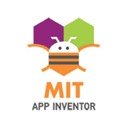
MIT App Inventor
MIT App Inventor is a free and open-source web-based platform that uses a block-based, visual coding environment to empower anyone to build mobile apps. Similar to Apphive's no-code approach, it's particularly well-suited for educational purposes or for users who are new to app development. Its features include visual programming, building blocks, cloud coding, and online editing, making it a fantastic and accessible Apphive alternative for learning and rapid prototyping.

Bubble
Bubble is a freemium web-based platform that allows users to build and host web applications without writing any code or hiring a team of engineers, making it a robust Apphive alternative, especially for web apps. It offers features like API integration, drag-and-drop design, plugins, responsive design, and robust security. Bubble stands out with its ability to handle complex logic and database interactions, providing a more comprehensive solution for those needing powerful web-based applications.
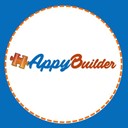
AppyBuilder
AppyBuilder is another excellent freemium alternative to Apphive, particularly for Android app development. Like Apphive, it uses a visual drag-and-drop interface, making app creation accessible without deep coding knowledge. Available on Windows, Android, and Android Tablet, it offers features such as a browser-based environment, developer tools, and visual programming, providing a familiar yet distinct experience for users accustomed to Apphive or App Inventor 2.
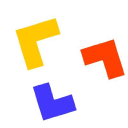
Generato
Generato is a commercial software as a service (SaaS) platform available on Mac, Windows, Linux, and Web, focused on helping users build and prototype apps fast with an easy-to-use visual designer and code generator. While a commercial option, its emphasis on rapid development and code generation makes it a strong Apphive alternative for those who need a quicker path to a functional prototype or even a production-ready app without extensive coding.

Casagbic
Casagbic is a free, web-based platform that allows users to build Android apps without any coding skills, offering a direct alternative to Apphive's no-code philosophy. With its simple drag-and-drop blocks, users can quickly create applications. Key features include an ad-free experience, drag-and-drop design, a form builder, and visual programming, making it an accessible and cost-effective option for beginners.
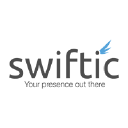
Swiftic
Swiftic is a commercial web-based mobile app solution designed to help businesses create custom apps and loyalty programs using a do-it-yourself approach. While Apphive focuses on general app creation, Swiftic specializes in business-oriented apps, offering features like drag-and-drop design and WYSIWYG support. It's a solid Apphive alternative for businesses looking for a guided, template-based approach to app development with specific marketing and loyalty functionalities.

Webase
Webase is a freemium, web-based no-code development platform that enables users to create and customize applications without writing any code, much like Apphive. Its focus on providing a completely code-free environment for web development makes it a compelling Apphive alternative for those prioritizing web-based applications. Features include no-coding required, and a fully web-based development environment.
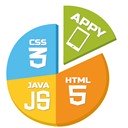
Appy Pie
Appy Pie is a commercial web-based drag-and-drop DIY mobile app creator supporting devices such as iPhone, Android, Blackberry, Windows, and Fire OS. As a comprehensive Apphive alternative, it caters to a wide range of platforms and users looking for an easy-to-use interface to build various types of mobile applications.
Choosing the best Apphive alternative ultimately depends on your specific project requirements, budget, and desired level of control. From open-source options like MIT App Inventor to powerful web app builders like Bubble, and more niche business solutions like Swiftic, there's a no-code or low-code platform out there to suit almost any need. Explore these options and find the perfect fit to bring your app ideas to life!